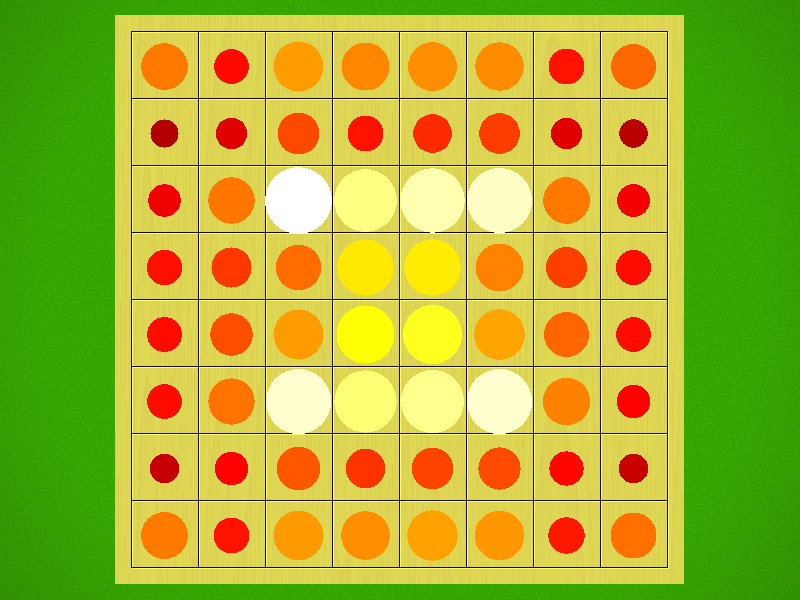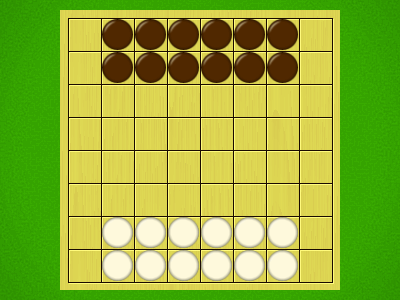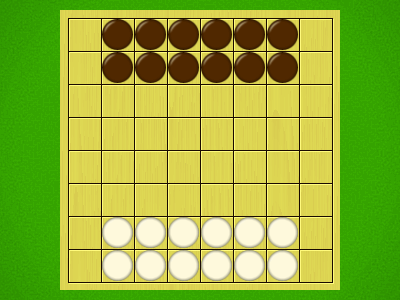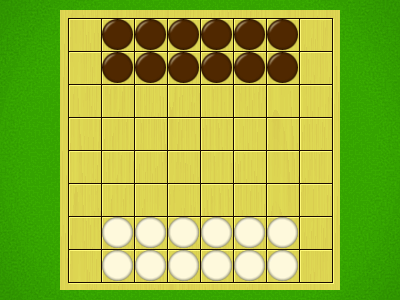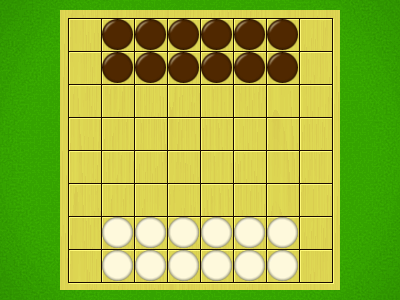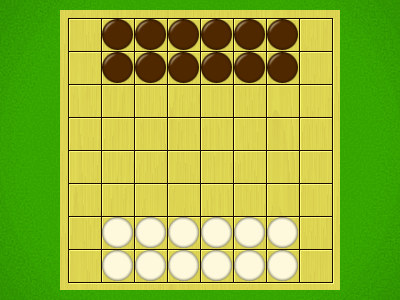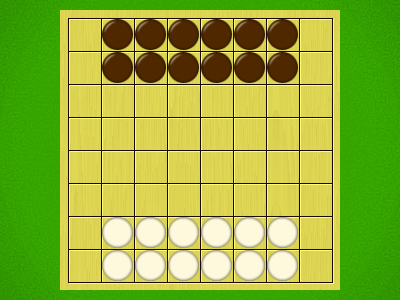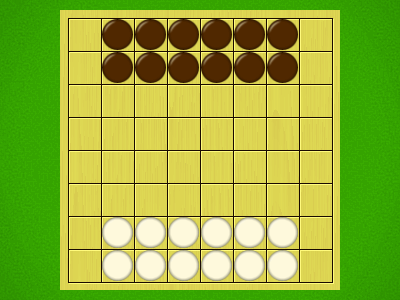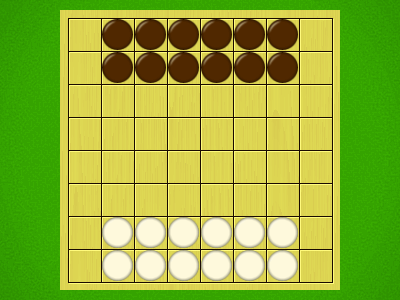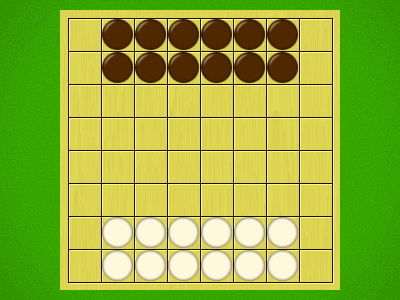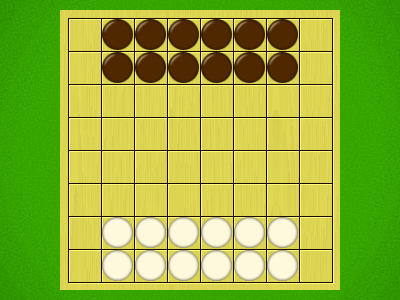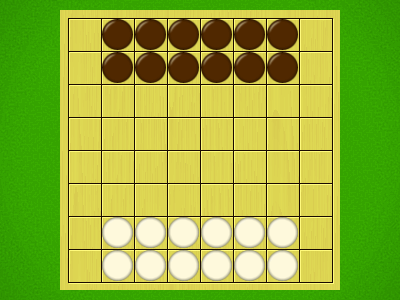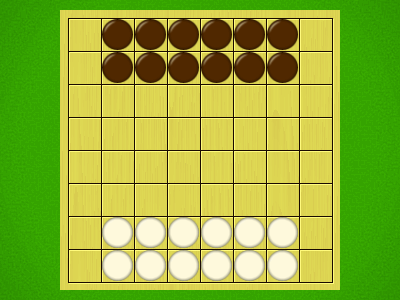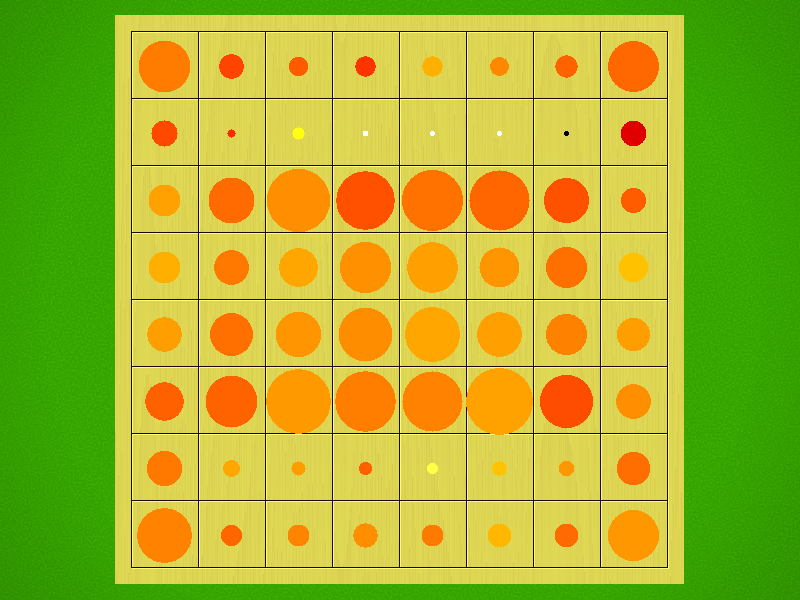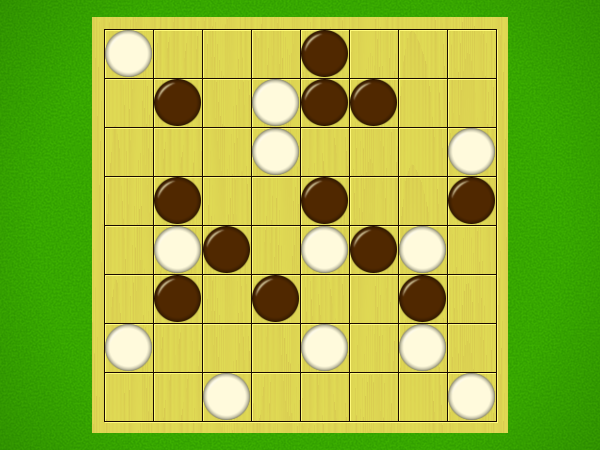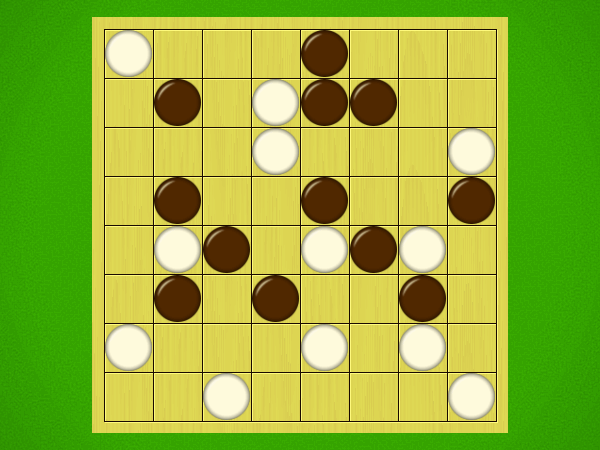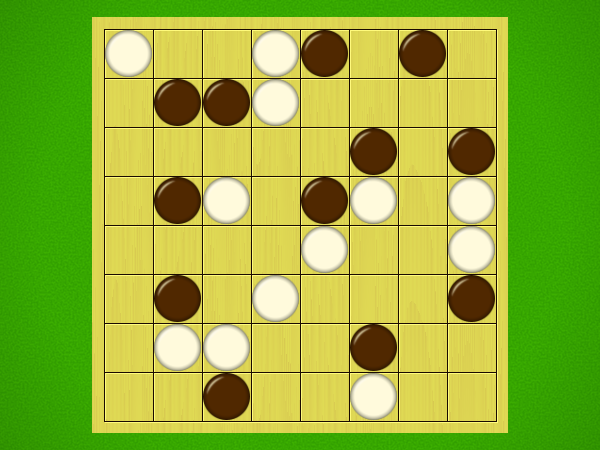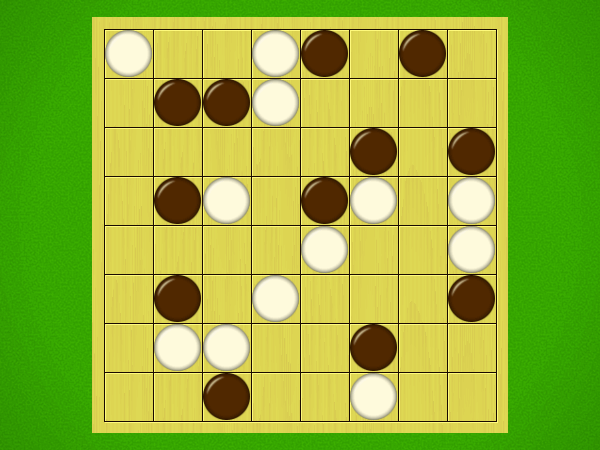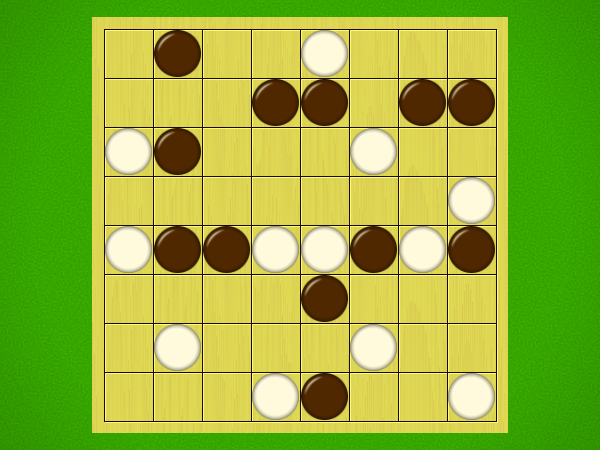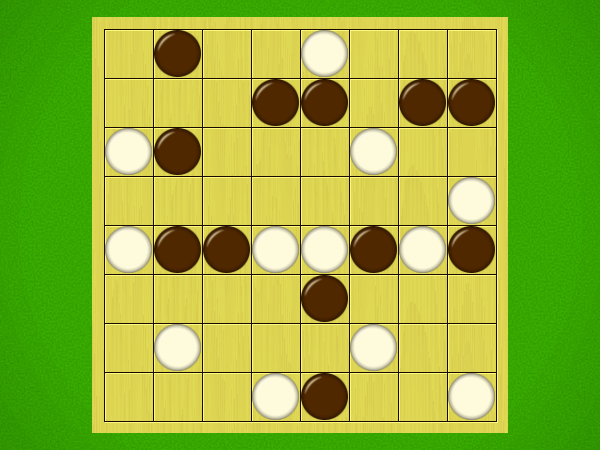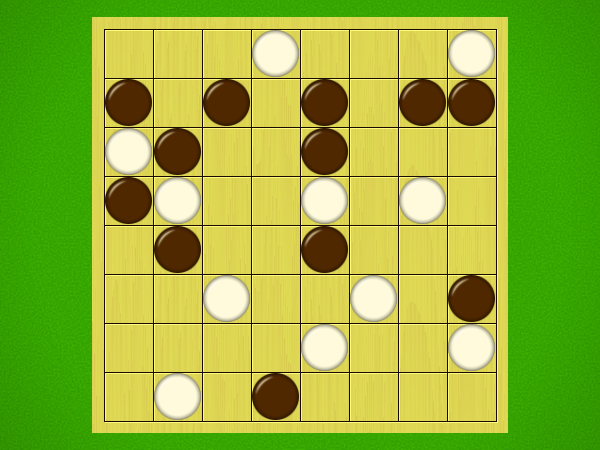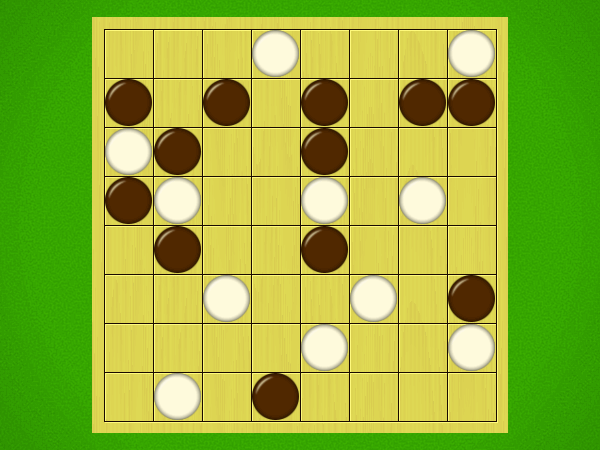Rules
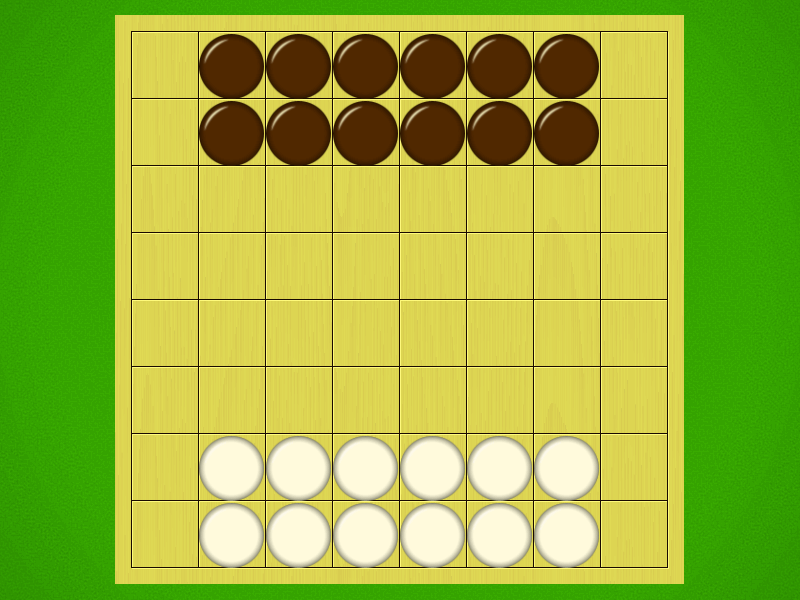
Representative game (in the sense of being of mean length). Wherever you see the 'representative game' referred to in later sections, this is it!
Definitions
- Line
- Same-colour pieces arranged in an unbroken straight line are called a line. The length of a line is the number of pieces belonging to that line. A row with only one piece in it is considered a line of length 1. Therefore, each piece belongs to multiple lines at any time.
- Step
- Moving a piece to an adjacent space is called a step.
- Jump
- Moving a piece two or more squares is called a jump.
Play
White plays first, then turns alternate; on White's first move, jumping more than once is not allowed.
Pieces move in straight lines, a distance exactly equal to the length of the line in that direction.
An enemy piece in the destination space is captured
If the move is a Jump (more than one space) then:
- Pieces in jumped spaces are ignored
- You cannot capture or land on a friendly piece
- You may continue to Jump with the same piece, but may not visit the same space twice
Game End
Play continues until a player separates all their pieces. They win.



